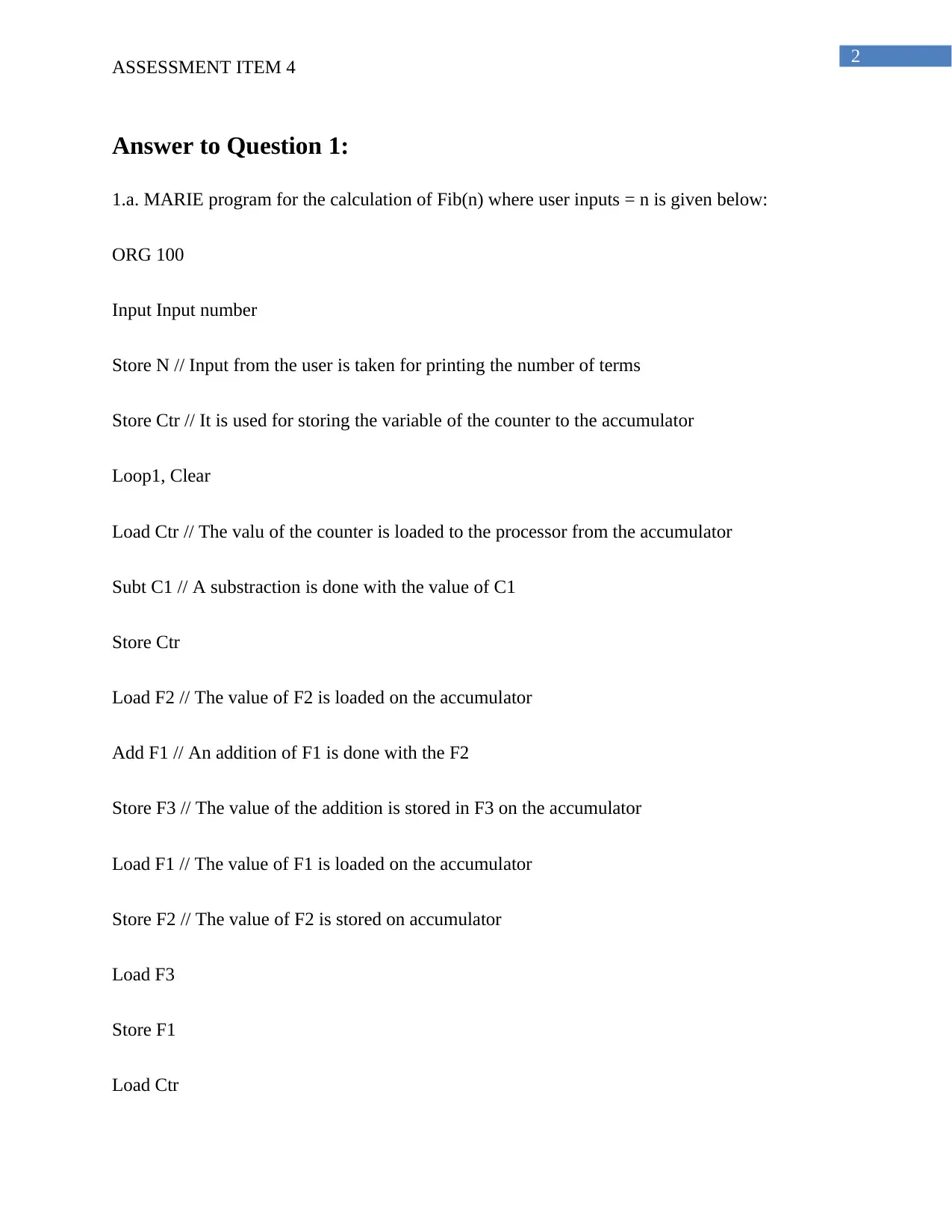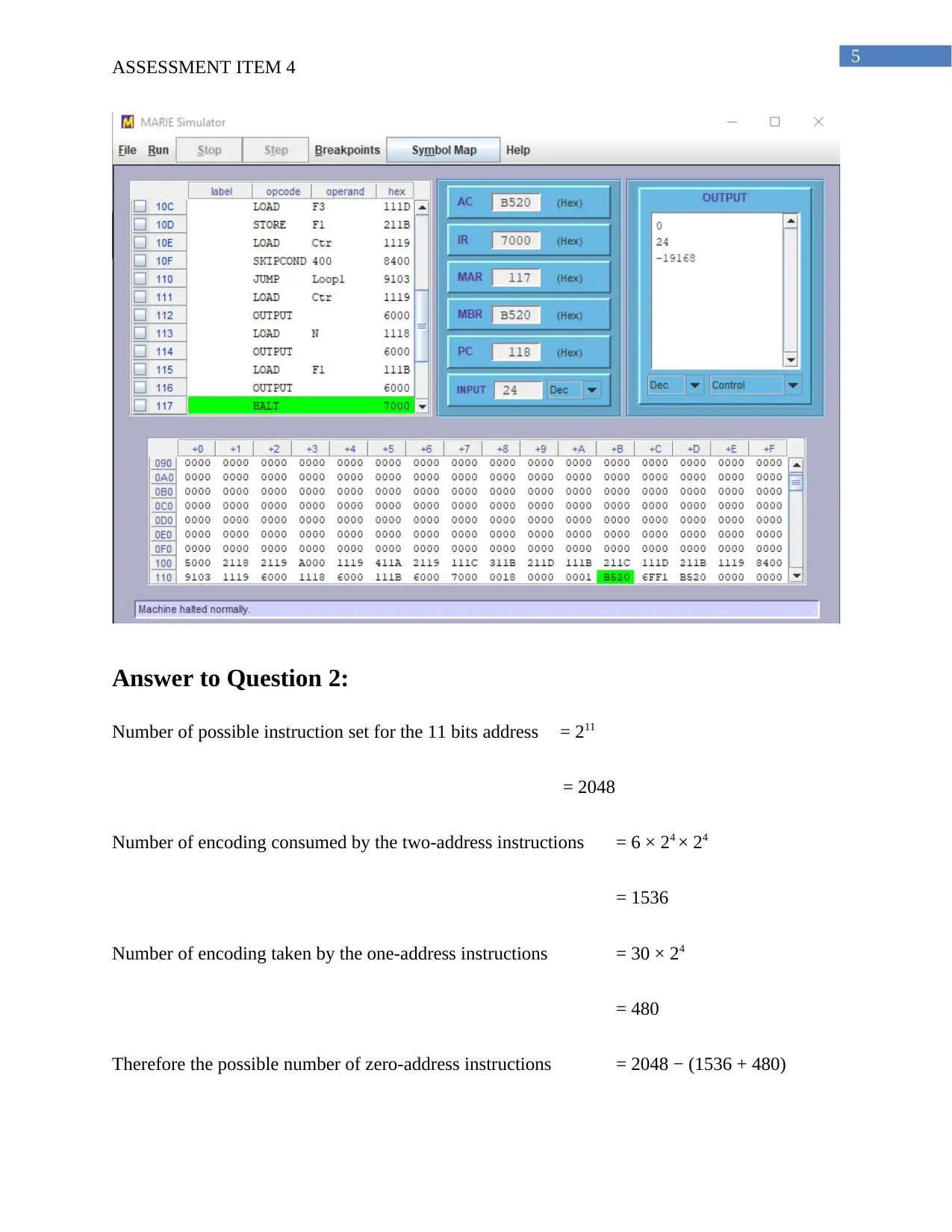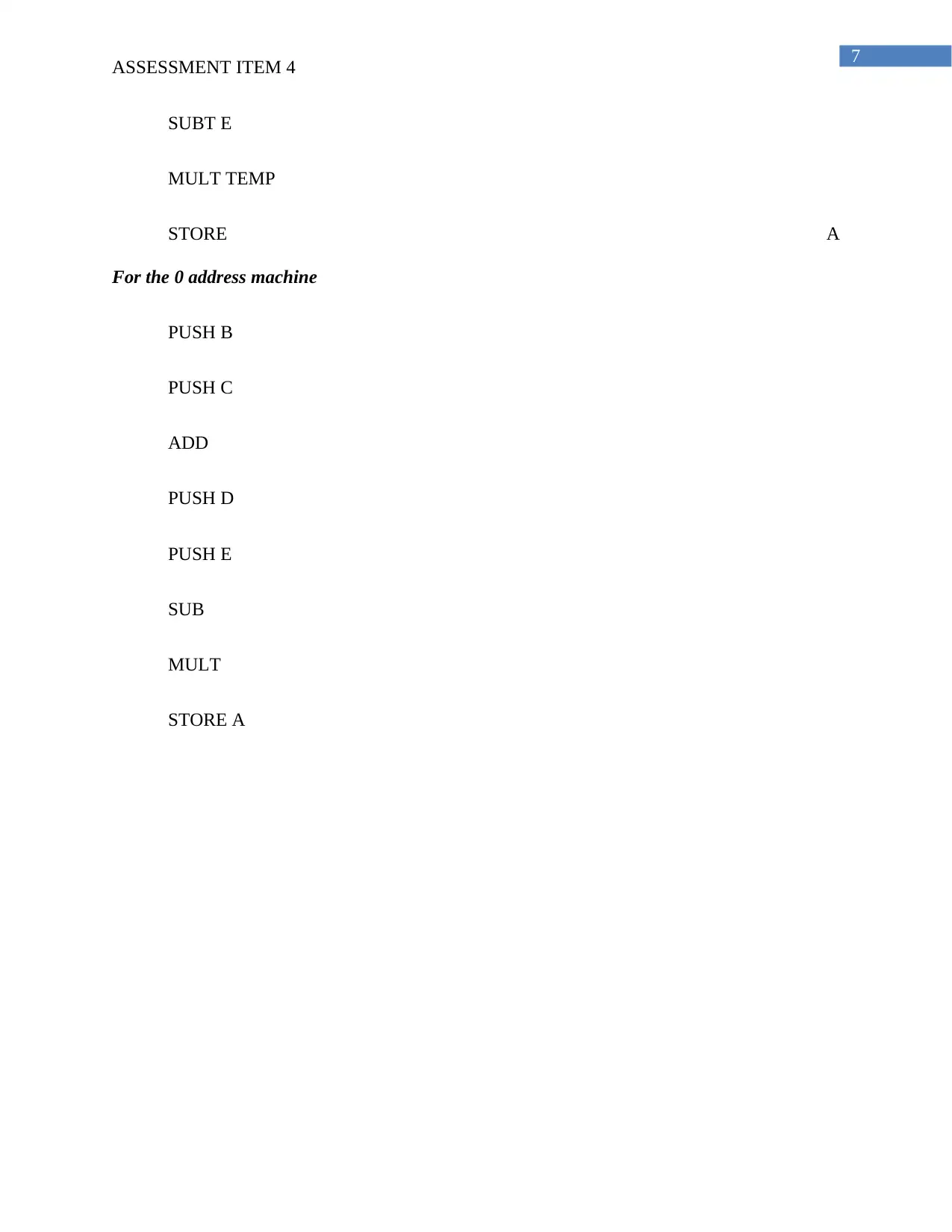MARIE Assembly Program for Fibonacci Sequence Calculation and ISA
VerifiedAdded on 2023/06/12
|9
|811
|325
Homework Assignment
AI Summary
This assignment presents a solution involving a MARIE assembly language program designed to calculate the Fibonacci sequence based on user input. The program takes an integer 'n' as input and computes the nth Fibonacci number. The solution includes the assembly code with detailed comments explaining each step, such as input handling, loop implementation, and output display. Additionally, the assignment addresses the limitations of the MARIE architecture concerning the maximum value of 'n' for accurate results due to integer limits. Furthermore, it explores Instruction Set Architecture (ISA) concepts by analyzing the number of possible instructions for a given address space and comparing code implementations across 3-address, 2-address, 1-address, and 0-address machines, illustrating the trade-offs in instruction complexity and memory usage. The document concludes with a bibliography of relevant computer architecture resources. Desklib provides access to this and many other solved assignments for students.
1 out of 9
















![[object Object]](/_next/static/media/star-bottom.7253800d.svg)